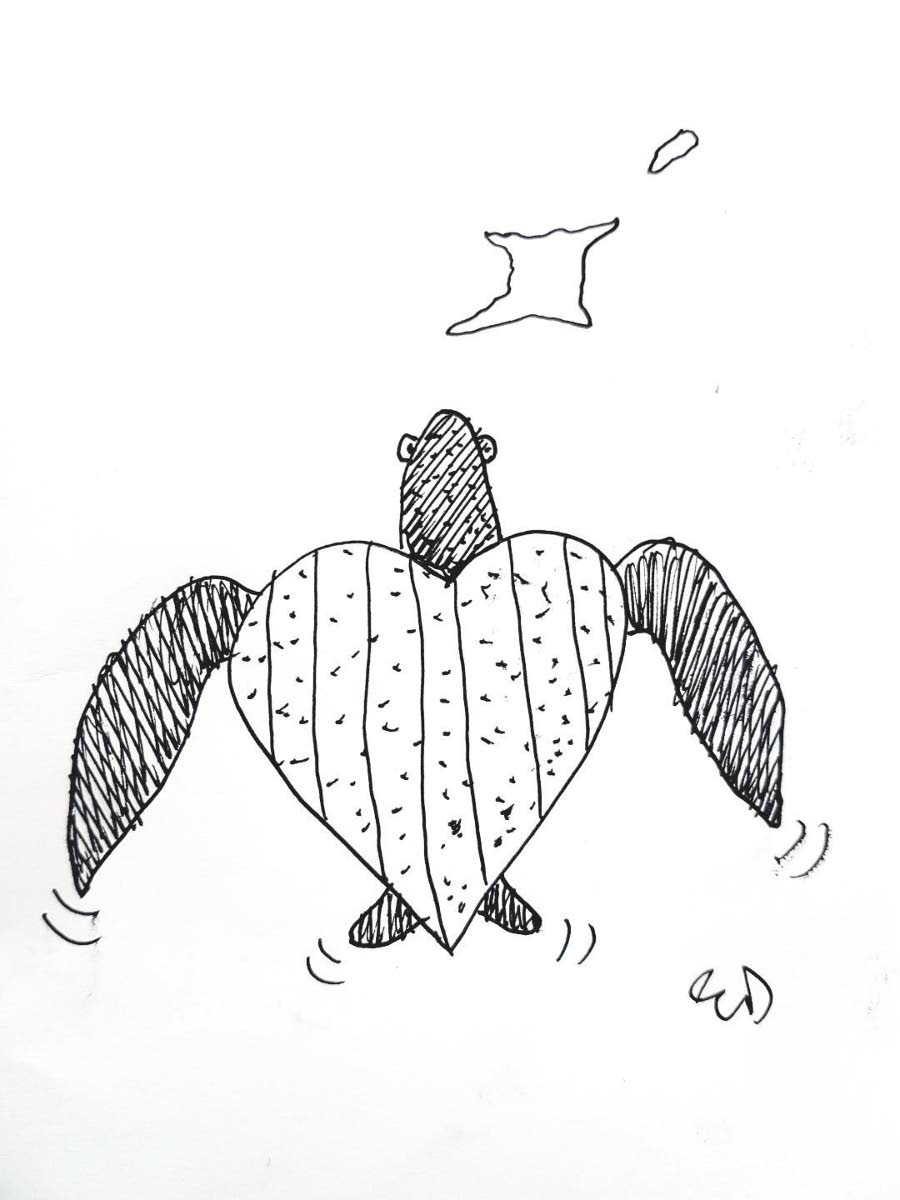Save a 100-million-year-old legacy (and more)

In 2013, I met and befriended two UK tourists (Sara and David, husband and wife) who were first-time visitors to Tobago. On their final night on the island, while dining at my home (in Goodwood at the time) they expressed their yearning to see leatherback turtles. Five attempts to do so over the span of their three-week vacation had been unsuccessful.
After dinner I drove them to Turtle Beach. There were no guarantees that we would see leatherbacks, but with that night being their last, it was worth a try. Upon arrival at Heritage Park, I led my guests towards the turtle-friendly red light of the SOS Patrol on the sand. There, next to a small group of fascinated onlookers, was a mammoth-sized female leatherback, slowly and powerfully moving sand to make a nest for her multitude of eggs.
Each turtle can lay up to an average of 100 eggs, but faced with the perils of numerous human-related threats, only one out of every 1,000 hatchlings may survive.
“Oh my God...Oh my God...Oh...my...God!” Sara whispered. David, eyes wide, mouth agape, remained silent for the next hour or so as the spellbinding egg-laying ritual unfolded before us.
Once she had covered her eggs, the majestic mother turned, propelled her body across the sand and disappeared into the ocean.
I have seen leatherback turtles on numerous occasions since my childhood. The most remarkable sighting I recall was in Grande Riviere, many years ago – an astounding number of massive black shapes congregated on the sand in silvery moonlight. To the first-time observer, from a distance, they probably appeared like mammoth rocks in an otherworldly landscape – until they started moving.
For Tara Short, founder of US-based Green Edventures, “every leatherback encounter is life-changing” – the reason why she started bringing her international tours to TT almost annually.
Leatherback turtles are the largest turtles on earth, capable of growing up to ten feet and weighing as much as 2,000 pounds. Over 100 million years ago their ancestors traversed this planet’s oceans. In current times, leatherbacks grace us with their presence, annually swimming thousands of miles from as far afield as Europe and Canada to our shores – one of their most important nesting grounds.
It is important for us to deeply consider these treasures from the deep and the immense value they bring to Trinidad and Tobago – a nation that strives to make a significant mark on the world through tourism. Natural assets, such as these phenomenal beings, should be protected and nurtured at all costs.
Locally, leatherbacks and four other species of turtles are listed and protected as environmentally sensitive species and are further protected by international environmental conventions.
Many of us are aware of the range of threats (mainly human-related) that contribute to decreasing global turtle populations – from overharvesting for shells, meat and eggs...to pollution, fatal plastic ingestion, boat collisions, bycatch in gillinets, and more.
Currently in Trinidad, leatherbacks face a potential new threat to their existence – the proposed multi-purpose port at Grande L'Anse Bay, Toco. Naturally, we must ask if this massive project is aligned with the commitment TT has made to international environmental conventions. Should the port be allowed to see the light of day at the proposed location, we stand to lose a cornucopia of natural treasures through irreparable damage to the surrounding (protected) environment and the intimately connected livelihood of people in the area for whom fishing and tourism are mainstays.
SpeSeas (a local non-profit, non-governmental organisation promoting positive change and sustainable use of our ocean resources using science, advocacy, and outreach) makes the following statement:
“SpeSeas recognises that negative environmental impacts are to be expected with any development project, and that the benefits and costs must be weighed. However, in our assessment, the development and operation of the proposed project will result in significant negative impacts, including on the local, regional, and global environment, that are not commensurate with the proposed benefits. For example, the destruction of an important and unique reef system, and severe consequences to turtle populations in the Caribbean and Atlantic Ocean. In light of this, in our assessment, the development of the proposed Toco Port is not acceptable and should not move forward.”
For more information please visit www.speaseas.org


Comments
"Save a 100-million-year-old legacy (and more)"